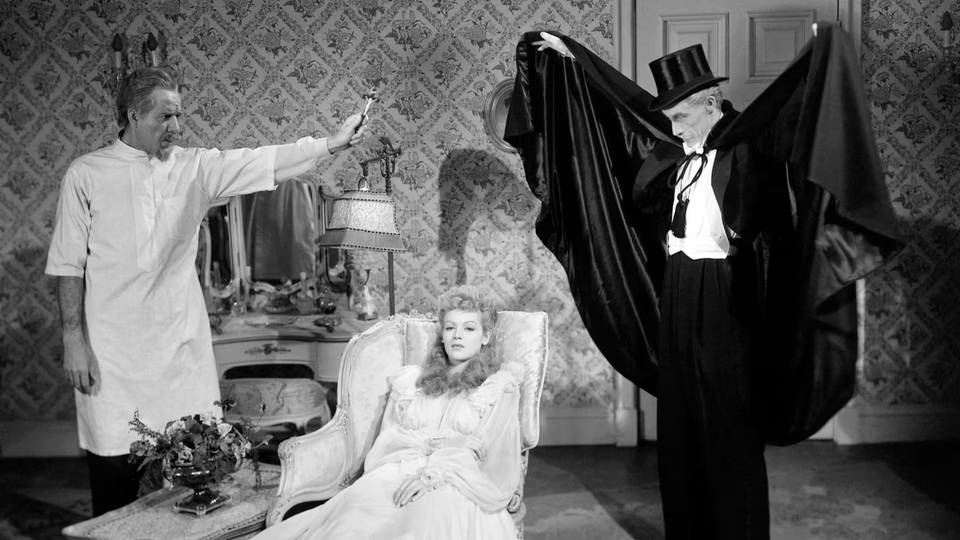House of Dracula

House of Dracula opens with Count Dracula, played by John Carradine, arriving at Dr. Edelmann’s castle laboratory seeking a cure for his vampirism. The scene should crackle with Gothic atmosphere, but instead it plays like a routine medical consultation. That’s the fundamental problem with this latest Universal monster mash—it mistakes scientific explanation for dramatic tension.
The film follows Dr. Franz Edelmann (Onslow Stevens), a scientist working in an oceanfront castle who finds himself treating a parade of Universal’s greatest monsters. First comes Dracula hoping to cure his blood addiction, then Lawrence Talbot (Lon Chaney Jr.) seeking relief from his lycanthropy, and finally—almost as an afterthought—Frankenstein’s monster makes a five-minute cameo to smash some furniture. It’s a premise rich with possibility that the film largely squanders.
Director Erle C. Kenton seems unsure whether he’s making a horror film or a medical procedural. The castle laboratory, which should be a shadowy realm of ancient secrets, is lit like a county hospital. When Dracula materializes from a bat, it’s a neat effect, but the clinical setting strips away any primal terror. Even the werewolf transformations, featuring Jack Pierce’s still-impressive makeup work, are filmed in harsh light that diminishes their impact.
Carradine’s Dracula is a particular disappointment. While his mustached appearance may be closer to Bram Stoker’s description, he lacks the dominating physical presence that made Bela Lugosi’s interpretation so memorable. Where Lugosi towered menacingly, Carradine seems to float through scenes like a displaced Southern gentleman who took a wrong turn at Transylvania.
The film’s geography is equally confused. Despite Franz’s European name and the clearly Continental village setting, the American accents of Edelmann and his staff create a jarring disconnect. It’s as if the film can’t decide whether it’s set in Universal’s mythic Europe or a California backlot (spoiler: it’s the latter).
That said, there are moments where the old Universal magic shines through. A scene where a character’s reflection fades from a mirror as vampirism takes hold is genuinely eerie. The matte work throughout is impressive, especially considering the film’s obvious budget constraints. And when Edelmann flees through shadows from pursuing villagers, Kenton briefly captures the expressionistic terror that made the original Universal monster films so compelling.
But these are brief flashes in what is otherwise a dim reflection of past glories. The sets feel like bargain versions of their predecessors—compare the obvious papier-mâché stairs leading up to Edelmann’s castle with Carfax Abbey’s iconic steps in the original Dracula. Even the shadows, so crucial to horror filmmaking, feel wrong. They’re harsh and artificial, more suited to film noir than Gothic horror.
At a mercifully brief 67 minutes, House of Dracula ultimately feels like a rough draft of better ideas. Dracula exits halfway through, Frankenstein’s monster is practically a footnote, and the werewolf plot retreads familiar ground right down to an on-the-nose Red Riding Hood reference. The film’s attempt to explain supernatural curses through science doesn’t just fail dramatically—it misunderstands why these monsters have endured in our imagination.
How far we’ve fallen from the atmospheric mastery of Tod Browning’s Dracula or the sardonic wit of James Whale’s Bride of Frankenstein. Those films understood that monsters work best in shadows, both literal and metaphorical. House of Dracula drags them into the harsh light of day, and like its vampiric antagonist, they crumble in the exposure.